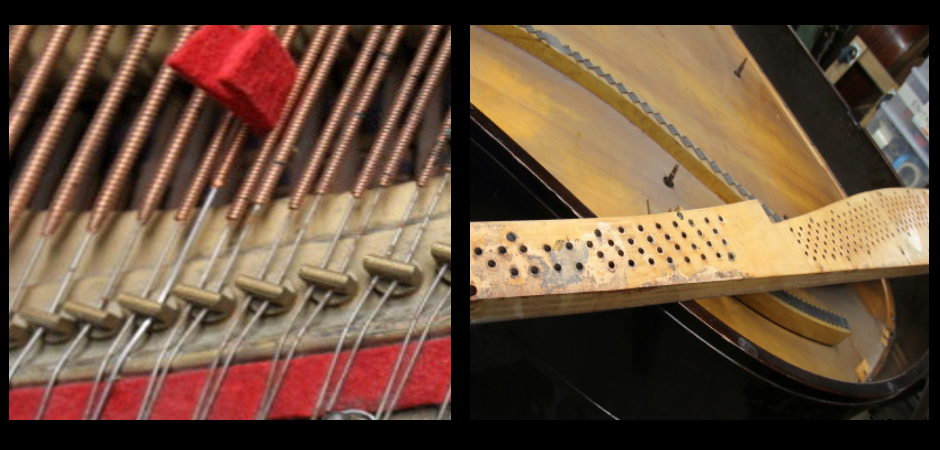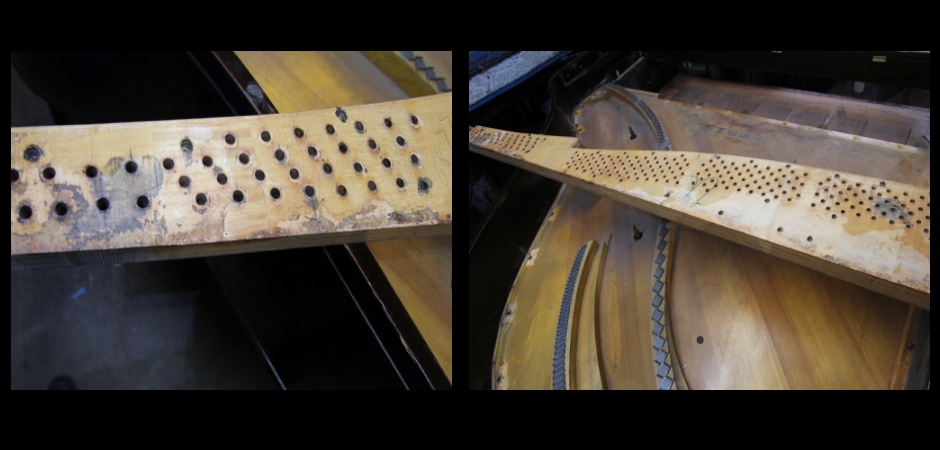The condition of this crucial part of the piano's structure determines whether or not the piano will stay in tune. Unfortunately, it's the part of the piano you can tell the least about yourself, as the experience and tools of a professional are needed to determine if the tuning pins are tight enough to hold the srings at their proper tension. Nevertheless, you can read a few clues. Look at the tuning pins. Whent he piano is new, the pins are set so the coil of wire around each pin is about 3/16 inch above the plate. If pins get loose, they can be driven further in to tighten them - if necessary, until the coils are almost touching the plate... Conversely, if the piano is dreadfully out of tune and far below standard pitch and the tuning pins have already been driven in as far as they can go, the chances are fairly good that that piano would require extensive rebuilding to bring it back to life... These are just clues; a final judgment on the matter must await the technician.
Also look around the tuning pins and on nearby areas of the plate for ugly, dark brown, gummy-looking stains that indicate the pinblock has been doped with chemicals to tighten the pins. On a grand, also look on the underside of the pinblock for the stains and for signs of cracking. Don't confuse dirt and rust with the chemical stains...
- From The Piano Book
- by Larry Fine


